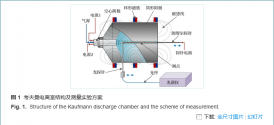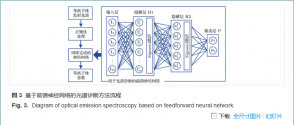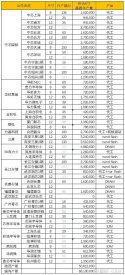So does anyone know if China's domestic tooling is good enough for SMIC to go on with <= 14nm mass production?
You are using an out of date browser. It may not display this or other websites correctly.
You should upgrade or use an alternative browser.
You should upgrade or use an alternative browser.
Chinese semiconductor industry
- Thread starter Hendrik_2000
- Start date
- Status
- Not open for further replies.
read last 100 pages of this thread.So does anyone know if China's domestic tooling is good enough for SMIC to go on with <= 14nm mass production?
I have but I got the impression it mostly stops at 14nm or 28nm with the exception of AMECread last 100 pages of this thread.
so you were asking about below 14nm ..I have but I got the impression it mostly stops at 14nm or 28nm with the exception of AMEC
7nm localization will be after 2023 or 2024.
On SMIC and 14nm/N+1 production, please go read back on my post here
#18,363
SMIC's SN1/SN2 fab cannot use American product, because sub 14nm tools were banned by previous sanctions. According to @PopularScience, that's why expanding production there has been so slow.
From the Lam interview
Similarly, ICRD already has a fully domestic production line and I think it's probably 14 nm or better.
So IMO, N+1 production at SN1 fab is a given at this point. I don't know for sure about N+2, but I don't really see anything that would stop N+2 production. Maybe EDA tools? But if previous roadmap is to be believed, they already have successful produced N+2 chips at SMSC fabs. Maybe the yield aren't very high, but there should be no reason why they can't start mass production sometimes next year.
Again, Chinese fabs do not need to be 100% domestic. They can continue to buy lithography machines from ASML and tools from Japan/SK/Taiwan.
#18,363
SMIC's SN1/SN2 fab cannot use American product, because sub 14nm tools were banned by previous sanctions. According to @PopularScience, that's why expanding production there has been so slow.
From the Lam interview
A:对。中芯南方做比较多7nm、14nm。虽然中芯南方拿不到Lam的设备,但还有一小部分人在中芯南方做服务。
A:有。ICRD一条国产线,一条欧美线。涉及到有欧美的线,就有一样的机器对标。
Similarly, ICRD already has a fully domestic production line and I think it's probably 14 nm or better.
So IMO, N+1 production at SN1 fab is a given at this point. I don't know for sure about N+2, but I don't really see anything that would stop N+2 production. Maybe EDA tools? But if previous roadmap is to be believed, they already have successful produced N+2 chips at SMSC fabs. Maybe the yield aren't very high, but there should be no reason why they can't start mass production sometimes next year.
Again, Chinese fabs do not need to be 100% domestic. They can continue to buy lithography machines from ASML and tools from Japan/SK/Taiwan.
Indeed. 塞翁失馬, 焉知非福.Looks @ansy1968 posted an English translation of the Lam employee interview that I had previously linked to but got deleted.
here is a new link
I have also saved it in case they delete it again.
My thoughts on that interview since it's given from the perspective of a Lam employee in charge of servicing CXMT. Tt was conducted before Oct 12th. Pretty much everything here checks out from the point of view of a Lam employee except for his assumption that Green card holders can continue to work with Chinese semiconductor industry.
From this interview, it's quite clear that American tools providers are done in China. For American firms, they simply cannot fully service their Chinese clients without some involvement from Americans. It's unclear if these rules will be loosened but certainly it makes sense for non-American firms to keep their American employees out of interaction with Chinese semiconductor industry on whether or not they want to pick their career vs citizenship. There is no reason ASML or Japanese firms cannot service Chinese customers as long as American citizens are not involved. As it is well known, ASML has over 1500 employees in China, so should have no issue servicing Chinese clients. For American execs in China like Gerald Yin, they will have to decide whether or not they want to keep their citizenship. Imo, we will get a mix of both. Without giving these people some time, it's unclear how they will decide. And even if they do decide to keep their job, it may take a while for them to legally give up their American status, which would keep them from working in their position for a while. Overall, 200 Americans for the entire Chinese IC industry is not a lot of people.
He made it clear that Lam will have to do massive layoffs in China and local Chinese employees will likely be hired by CXMT/YMTC to continue servicing the Lam machines they already have. The only issue is spares. However, Fujian Jinhua has shown that these spares can be sourced from other countries. A lot of the components aren't even American. So, there should be minimal effect to current production or upcoming production that have already received their machines. YMTC has been clear they have been stocking up.
Even so, future expansion will likely be stopped unless CXMT/YMTC can source those tools locally or from Japan. It is likely that Japanese companies will benefit big time from this. AMEC currently cannot fully replace Lam products according to this Lam employee. Nand production relies on more etching equipment than your logic chip production, so AMEC still has some work to do. This will affect both YMTC and CXMT. Unclear how much this will slow them down. Keep in mind that as long as the American content is below 25%, it can continue to be sold to China. That includes the precious ASML DUVi scanners that SMIC currently relies on in its advanced node fab.
While it is possible that YMTC/CXMT/SMIC/HLMC can receive American tools that are not "banned", they have to sign agreement with US gov't to assure that those production will not be used for military or other sensitive purpose. They are unlikely to sign this. As such, they are essentially getting the Fujian Jinhua treatment or the entire Chinese IC industry is getting Jinhua treatment. It's unclear to me how much service a mature node fab can get from American companies.
Lam employee admits that Jiading ICRD and SMIC's SMSC fab can already operate without American tools. As such, there is no reason that advanced processes in China will be stopped by this. He also recognizes that SMSC can already produce both 7 and 14 nm chips without Lam product. Again, it seems like the issue is production level from Chinese tools makers rather than capability. That's how Chinese tools makers continue to win greater % of bids we see, especially between NAURA and AMEC. With the number of Chinese employees that AMAT/LAM/KLA will have to let go, the logical conclusion is that they will join their Chinese competitors or the fabs that use them. As such, this level of knowledge/personnel transfer is likely to have huge impact on the product development and expansion plan of Chinese tools makers.
Neural network monitoring of plasma etching equipment.
Plasma optical emission spectroscopy based on feedforward neural network
Optical emission spectroscopy (OES) has been widely applied to plasma etching, material processing, development of plasma equipment and technology, as well as plasma propulsion. The collisional-radiative model used in OES is affected by the deviation of fundamental data such as collision cross sections, thus leading to the error in diagnostic results. In this work, a novel method is developed based on feedforward neural network for OES. By comparing the error characteristics of the new method with those of the traditional least-square diagnostic method, it is found that the neural network diagnosis method can reduce the transmission of basic data deviation to the diagnosis results by identifying the characteristics of the spectral vector. This is confirmed by the experimental results. Finally,The mechanism of the neural network algorithm against fundamental data deviation is analyzed. This method also has a good application prospect in plasma parameter online monitoring, imaging monitoring and mass data processing.


Pelosi's husband sells Nvidia, Micron options at a loss
WASHINGTON (Reuters) - The husband of U.S. House Speaker Nancy Pelosi sold call options on chipmakers Micron Technology and Nvidia for a loss of less than $1 million, according to a new filing.
In Friday's regular trading report, Pelosi's husband (Paul Pelosi) lost $392,575 on the sale of Micron call options he bought in December 2021. The report also showed that he sold the Nvidia call options he bought in July 2021 for a loss of $361,476.
A 2012 U.S. law made it illegal for lawmakers to use information about their work in Congress for personal gain. They are required by law to disclose their own or a family member's stock trading within 45 days.
Top House Democrats have yet to allow a vote on legislation restricting lawmakers and other government officials from trading stocks. Such legislation was introduced in response to allegations that some lawmakers may have used their positions for personal gain.
In July, Paul Pelosi sold Nvidia stock just days before the House approved legislation to provide more than $70 billion worth of subsidies and tax credits to boost the U.S. semiconductor industry.
An analysis by Unusual Whales, a service that sells financial data, concluded that members of Congress traded $290 million in stocks, options, cryptocurrencies and other assets last year and, on average, outperformed the market.

- Status
- Not open for further replies.

